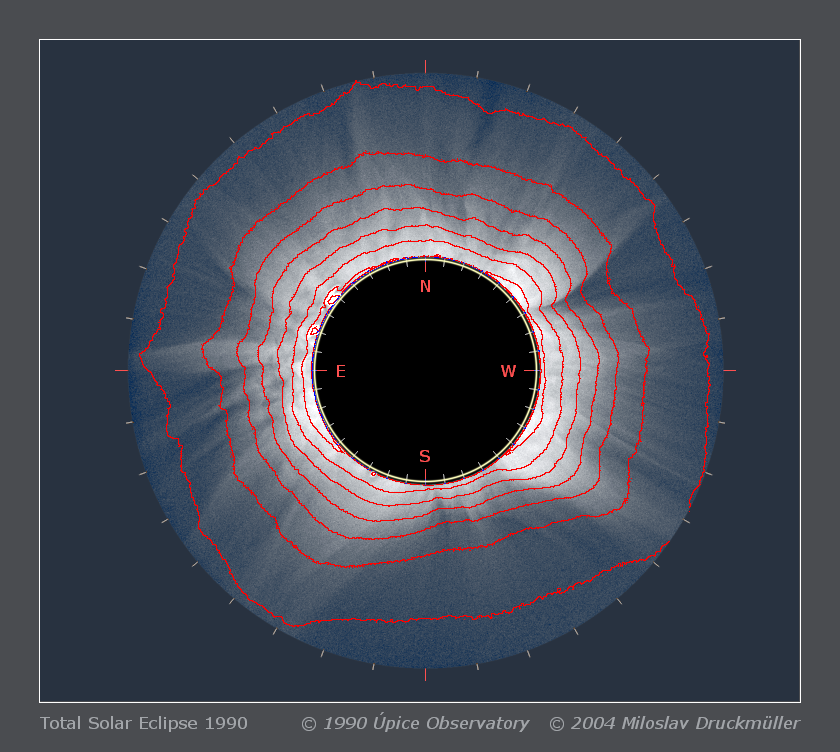| Image | Se1990ch_iso1.png |
| Date | 22. 07. 1990 |
| Time | Second contact 03:03:06 UT, third contact 03:04:50 UT
Eclipse duration 104 s |
| Place | Russia, Chukotka, Markovo village near Anadyr river |
| Coordinate | E 170° 30' , N 64° 43' |
| Conditions | Good - altitude of the Sun 41° above the horizon |
| Optics | Merz 160 mm stopped down to 90 mm, focal length 1785 mm |
| Film | Fortepan 400 |
| Exposure | 1/125 s - 2 s |
| Processing | Sum of 7 images enhanced by means of adaptive kernel convolution. The original images are B&W, the color is added by image processing.
Image processing by Miloslav Druckmüller |
| Scanner | Nikon LS 8000 (4000dpi resolution, 16 bit/pixel) |
| Software | Sofo ACC 6.0 Scientific Image Analyzer with Match II Module (isolines computing and final processing)
Corona 3.0 (coronal structure enhancement)
PhaseCorr 2.0 (rotation estimation - registration of images) |
| Orientation | This image has the standard orientation i.e. North on the top end East on the left |
| Copyright | © 1990 Úpice Observatory, © 2004 Miloslav Druckmüller |

